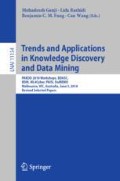Abstract
Computer systems may employ some form of whitelisting for execution control, verification, minimizing false positives from other detection methods or other purposes. A legitimate file in a whitelist may be represented by its cryptographic hash, such as a hash generated using an SHA1 or MD5 hash function. Due to the fact that any small change to a file in a cryptographic hash results in a completely different hash, a file with a cryptographic hash in a whitelist may no longer be identifiable in the whitelist if the file is modified even by a small amount. This prevents a target file from being identified as legitimate even if the target file is simply a new version of a whitelisted legitimate file.
Locality Sensitive Hashing is a state of the art method in big data and machine learning for the scalable application of approximate nearest neighbor search in high dimensional spaces [9]. The identification of executable files which are very similar to known legitimate executable files fits very well within this paradigm.
In this paper, we show the effectiveness of applying TLSH [1, 2]; Trend Micro’s implementation of locality sensitive hashing, to identify files similar to legitimate executable files. We start with a brief explanation of locality sensitive hashing and TLSH. We then proceed with the concept of whitelisting, and describe typical modifications made to legitimate executable files such as security updates, patches, functionality enhancements, and corrupted files. We will also describe the scalability problems posed by all the legitimate executable files available on the Windows OS. We will also show results of similarity testing against malicious files (malwares). Data will be provided on the efficacy and scalability of this approach. We will conclude with a discussion of how this new methodology may be employed in a variety of computer security applications to improve the functionality and operation of a computer system. Examples may include whitelisting, overriding malware detection performed by a machine learning system, identifying corrupted legitimate files, and identifying new versions of legitimate files.
Access this chapter
Tax calculation will be finalised at checkout
Purchases are for personal use only
References
Open Sources in GitHub. https://github.com/trendmicro/tlsh/
Oliver, J., Cheng, C., Chen, Y.: TLSH - A Locality Sensitive Hash. In: 4th Cybercrime and Trustworthy Computing Workshop, Sydney, November 2013. https://github.com/trendmicro/tlsh/blob/master/TLSH_CTC_final.pdf
Oliver, J., Forman, S., Cheng, C.: Using randomization to attack similarity digests. In: Batten, L., Li, G., Niu, W., Warren, M. (eds.) ATIS 2014. CCIS, vol. 490, pp. 199–210. Springer, Heidelberg (2014). https://doi.org/10.1007/978-3-662-45670-5_19
Oliver, J., Pryde, J.: Smart Whitelisting Using Locality Sensitive Hashing. https://blog.trendmicro.com/trendlabs-security-intelligence/smart-whitelisting-using-locality-sensitive-hashing/
Implementing Application Whitelisting. Australian Signals Directorate. https://www.asd.gov.au/publications/protect/application_whitelisting.htm
How CyberCrime Exploits Digital Certificates. InfoSec Institute. http://resources.infosecinstitute.com/cybercrime-exploits-digital-certificates/#gref
Krebs, B.: Security Firm Bit9 Hacked, Used to Spread Malware. https://krebsonsecurity.com/2013/02/security-firm-bit9-hacked-used-to-spread-malware/
IOPI: Borrowing Microsoft Code Signing Certificates. https://blog.conscioushacker.io/index.php/2017/09/27/borrowing-microsoft-code-signing-certificates/
Rajaraman, A., Ullman, J.: Mining of Massive Datasets (2010). (Chapter 3)
Ni, Y., Chu, K., Bradley, J.: Detecting Abuse at Scale: Locality Sensitive Hashing at Uber Engineering (2017). https://eng.uber.com/lsh/
Author information
Authors and Affiliations
Corresponding author
Editor information
Editors and Affiliations
Rights and permissions
Copyright information
© 2018 Springer Nature Switzerland AG
About this paper
Cite this paper
Pryde, J., Angeles, N., Carinan, S.K. (2018). Dynamic Whitelisting Using Locality Sensitive Hashing. In: Ganji, M., Rashidi, L., Fung, B., Wang, C. (eds) Trends and Applications in Knowledge Discovery and Data Mining. PAKDD 2018. Lecture Notes in Computer Science(), vol 11154. Springer, Cham. https://doi.org/10.1007/978-3-030-04503-6_19
Download citation
DOI: https://doi.org/10.1007/978-3-030-04503-6_19
Published:
Publisher Name: Springer, Cham
Print ISBN: 978-3-030-04502-9
Online ISBN: 978-3-030-04503-6
eBook Packages: Computer ScienceComputer Science (R0)

